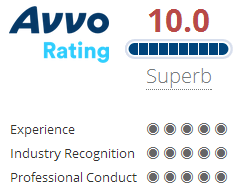Call Now 323-464-6700 for a Free Consultation
Law Offices of Jonthan Franklin - Blog
The term “military DUI” refers to a uniformed member of the armed forces being arrested for driving under the influence. When a military member is charged with DUI on a military base, the service member isn’t charged by state penal code. Instead, he’s charged under the Uniform Code of Military Justice. Now, if the person arrested on a military base isn’t a service member, he is charged with DUI under California law.
Majority of driving under the influence, DUI, cases aren’t slam dunks for the prosecution. In fact, they hinge on the outcome of a blood or breath test. If a test was given and the result was .08 percent or higher, the driver is likely to be charged with DUI. That amount is above the legal limit in California.
Did you know the Breathalyzers used in California do not provide an accurate measurement of a woman’s blood alcohol concentration, or BAC? Imagine you are a woman who takes a Breathalyzer test after being accused of DUI. Your actual BAC is 0.07 percent. This is below California’s 0.08 statutory amount. Obviously the state would not have strong evidence against you, right? Wrong. The Breathalyzer result may not read 0.07 percent, but 0.10 percent.
This question comes up a lot after someone has been arrested for driving under the influence, or DUI. If you are facing DUI charges, it is easy to feel like you are going to be convicted. Maybe you failed field sobriety tests. Maybe you failed a breath test. Whatever the reason that caused you to be accused of DUI, it does not mean all hope is lost. You have legal options to fight a DUI charge.
The flyers essentially apply general principals of U.S. Constitutional protections. The general idea behind the flyer is to display it through a car window and not to establish eye contact with the police, asserting Constitutional rights in an effort to limit the time and interaction with the police at the DUI checkpoint. Police may try to argue that they had reasonable suspicion in some way, to move forward with routine questioning.
Police in California are tough on driving under the influence, or DUI, enforcement during major holidays like Christmas and New Year's Eve. They are vigilant during school breaks too. In fact, spring break is no exception. Since you are not interested in ruining your vacation with a DUI arrest, here are some tips to avoid incurring a DUI charge:
Every state has implemented its own driving under the influence, or DUI, laws. California is no exception. The state has devoted VC 23152 to driving under influence of drugs or alcohol. Understanding the law can be confusing. So it is important to know as much as you can about the law to be better prepared to handle any situation where you may be stopped for DUI.
It is a crime in California to drive under the influence of drugs and/ or alcohol. A driver can be prosecuted and penalized for the crime in a variety of ways. One way is by focusing on the following elements when deciding when to file charges:
• Driver’s criminal history.
• The circumstances regarding the DUI arrest.
Based on the above factors, prosecutors will charge people with the offense that seems appropriate. However, there are exceptions. One exception involves drivers under the age of 21.
Throughout the United States, law enforcement has made many efforts to educate people about the dangers of driving while under the influence of alcohol or drugs. One part of the education process is using a call of action: report drunk drivers. For instance, you may see a posted sign telling you to call 911 when you notice an individual driving drunk on California city streets or freeways. It does seem simple to report a drunk driver. You call 911 and an officer stops the driver. However, a recent U.S. Supreme Court case just made the issue more complex.
In a driving under the influence case, a defendant’s driving behavior can sometimes be one of the most important issues the prosecution can try and use to secure a DUI conviction. Driving patterns like driving too slow, speeding or drifting in and out of lanes are some examples of driving behavior connected with drunk driving. However, poor driving skills or even distraction does not automatically prove that a driver was under the influence of drugs or alcohol.















